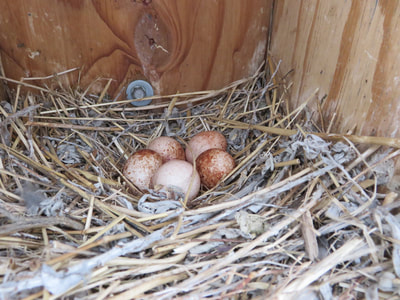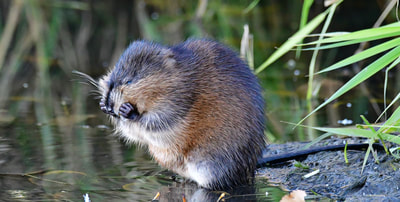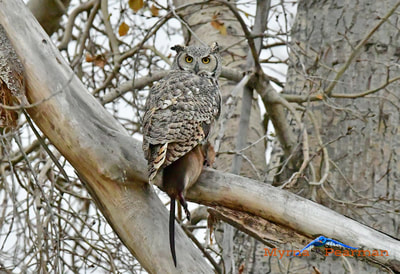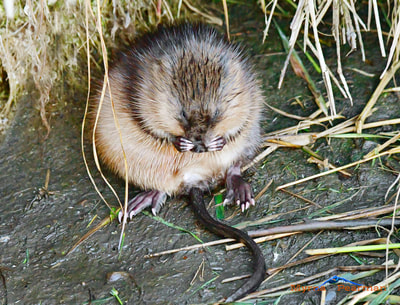 American Kestrels are one of my favourite bird species. Colorful, tiny and fierce, they hold the distinction of being both North America’s smallest falcon and the only hawk species to nest in cavities. Historically called the “sparrow hawk,” this species is declining across much of its range. Thankfully, they still seem to be fairly common in Central Alberta, where they are usually seen perched on power line wires or poles that bisect open grasslands and parklands. Their hunting method – hovering into the wind – is very distinctive, and the adults can be easily differentiated by their plumage: the males have blue-gray wings and a more colourful head pattern than the females. Many years ago, I built and set out several kestrel boxes near our Rimbey-area farm. I was thrilled when one pair took up residence, offering me the opportunity to watch the adults and see the nestlings up close. More recently, I have appreciated the opportunity to check boxes with other kestrel enthusiasts. How ugly the young are when first hatched, and how quickly they grow. Unique among birds, nestling kestrels have a very creative way of disposing of their feces; they back up, lift their tails and squirt it on the roof and walls of the cavity! I remember being shocked and surprised to open up a box with week-old chicks. I was taken aback by both their cute-but-ugly faces and the smelly fecal wallpaper they were creating inside the box. Although kestrels will take the odd songbird, they eat mostly grasshoppers, beetles, dragonflies, spiders, butterflies, moths and small mammals. Interestingly, they can use their ability to see ultraviolet light to track voles and other small mammals by following urine trails. If hunting is good, they will cache surplus prey in/on hiding spots such as bushes, grassy clumps, tree limbs and cavities. Because of their small size, they often fall prey to larger hawks and owls. American kestrels are migrants, usually arriving in Alberta each spring in April and then departing in October. Overwintering records are rare, so I was grateful for the opportunity to watch and photograph a lone male kestrel that decided to hang around a subdivision south of Calgary a couple winters ago. Residents in this subdivision fed a large population of house sparrows, so this bird decided (either by choice or because of some ailment) that it would just stay behind and avail itself of easy pickings. Each day, it took a sparrow or two and, according to the bird watchers in the area, thrived for the entire winter. If you are interested in setting out nestboxes for American Kestrels, the Alberta Conservation Association has an excellent downloadable booklet with all the details (http://www.ab-conservation.com/downloads/educational_materials/brochures/nest_box_guide_and_instructions.pdf). 20/10/2017 Muskrats I am intrigued by muskrats. Over the past several years, I’ve enjoyed observing and photographing these busy little rodents. Fall is a good time of year to go muskrat watching, as their population is high and they can be seen busily preparing for winter. Muskrats have been in the national news recently, as animal rights groups are questioning the Canadian government’s decision to proceed with an order to kill 12,000 of these remarkable little animals so their fur can adorn RCMP winter hats. Animal defenders point out that muskrat trapping can be cruel and that an alternative insulating material could easily replace the muskrat fur on RCMP hats. My most recent muskrat encounters, both interesting and poignant, have been at Ellis Bird Farm (EBF). Following an onsite meeting not long ago, I ambled with a binocular-toting bird watcher friend down to the dipping pier. We were pleasantly surprised to count six muskrats. What a delight it was to watch them swim by, come out of the water to retrieve grass stems to eat, and even sit beside us and groom themselves. But I was surprised the bird watcher declared that one of the muskrats was swimming with an apple in its mouth! I immediately knew the source of the apple: about eight years ago, we planted a small apple orchard on the hillside by the Wetland Centre. The orchard produced a good crop this year, some of which ended up on the ground. The deer, the resident snowshoe hares and even the muskrats have discovered this candy store. After watching a sparring match between two apple-loving muskrats, my friend went up to the orchard and retrieved a few more apples. She placed them on a little mud patch beside the pier and, within seconds, two muskrats were seen racing to claim the prize. The winner set upon the apple with relish and promptly slurped it down. I was thrilled to be able to photograph the action. A few days later, I returned to the pond (with a few apples in my pocket) to see if the muskrats might still be active. As I rounded the corner by the apple orchard, I came face to face with Albert, our resident male Great Horned Owl. In his talons was a freshly killed muskrat. Albert flew west with his heavy load. He landed in one of the large poplar trees and draped the muskrat over a sturdy branch. I slowly approached him and, for a few long seconds, we held each other’s gaze. I’m not sure what he was thinking, but I found myself pondering the visceral reality of life and death. And I fretted about the possibility that we had inadvertently set up the perfect muskrat-killing system by planting an apple orchard at a perilous distance from the pond. It is my hope that the owls will spare a few muskrats so they can continue to grace our wetlands. I have proposed that we plant additional apple trees closer to water, so the fruit can fall into the tall and protective shoreline grass. I also look forward to offering the opportunity for our visitors (onsite and online via webcams) next season to watch and appreciate these fascinating and industrious wild neighbors. UPDATE: I visited the pond yesterday (October 20) and there were TWO muskrats dining on apples. Let's hope that they are a breeding pair so we can have more little muskrats enjoying apples next year! |
AuthorMyrna Pearman Archives
August 2022
|
All photos and published works on this website are copyright Myrna Pearman unless otherwise noted.
Re-posting these images or publishing is not permitted without Myrna's written consent.
Copyright Myrna Pearman Publishing 2024- Site design and maintenance by Carolyn Sandstrom
Re-posting these images or publishing is not permitted without Myrna's written consent.
Copyright Myrna Pearman Publishing 2024- Site design and maintenance by Carolyn Sandstrom










 RSS Feed
RSS Feed



30/10/2017
3 Comments